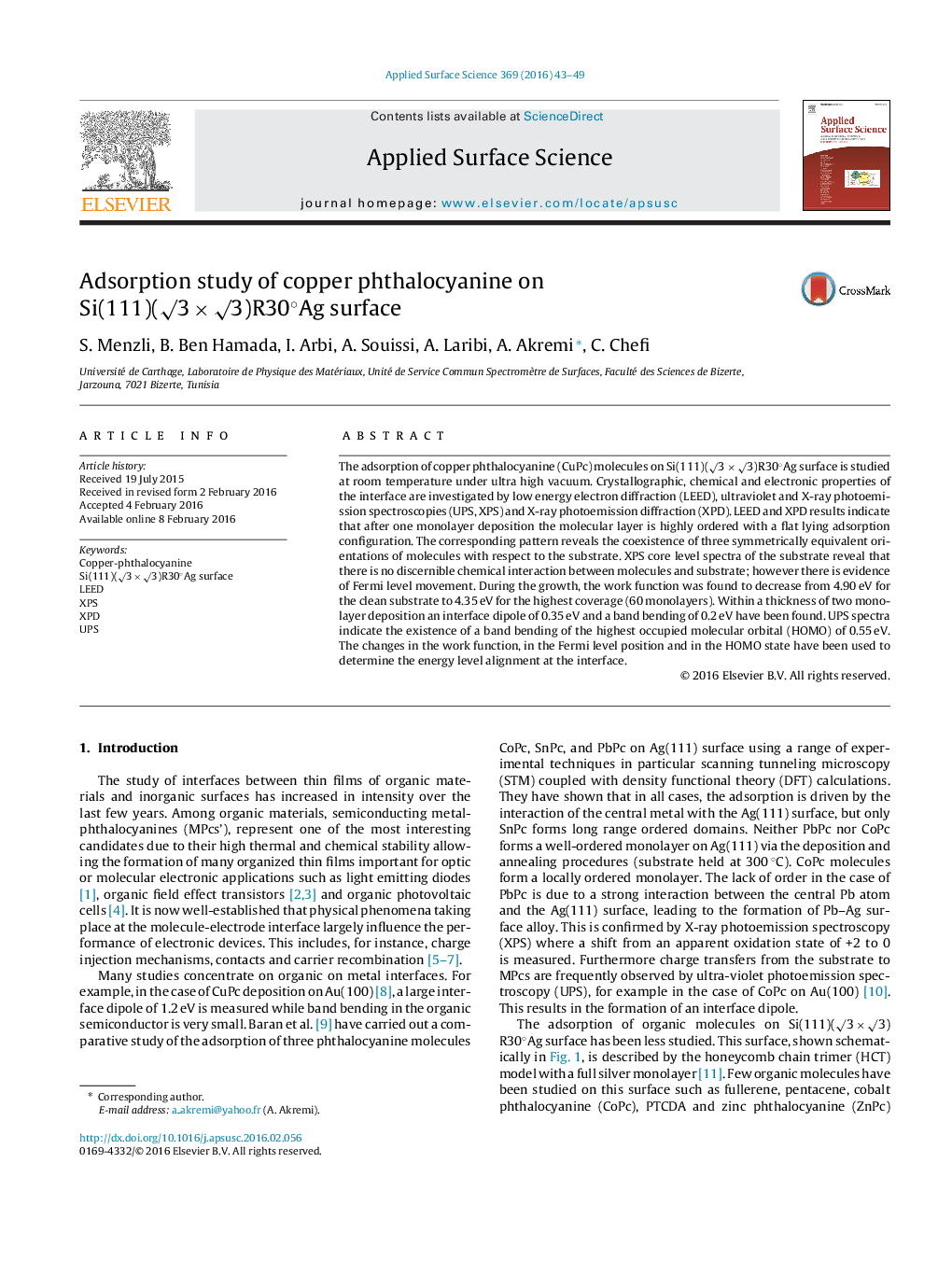| Article ID | Journal | Published Year | Pages | File Type |
|---|---|---|---|---|
| 5355192 | Applied Surface Science | 2016 | 7 Pages |
Abstract
The adsorption of copper phthalocyanine (CuPc) molecules on Si(111)(â3 Ã â3)R30°Ag surface is studied at room temperature under ultra high vacuum. Crystallographic, chemical and electronic properties of the interface are investigated by low energy electron diffraction (LEED), ultraviolet and X-ray photoemission spectroscopies (UPS, XPS) and X-ray photoemission diffraction (XPD). LEED and XPD results indicate that after one monolayer deposition the molecular layer is highly ordered with a flat lying adsorption configuration. The corresponding pattern reveals the coexistence of three symmetrically equivalent orientations of molecules with respect to the substrate. XPS core level spectra of the substrate reveal that there is no discernible chemical interaction between molecules and substrate; however there is evidence of Fermi level movement. During the growth, the work function was found to decrease from 4.90 eV for the clean substrate to 4.35 eV for the highest coverage (60 monolayers). Within a thickness of two monolayer deposition an interface dipole of 0.35 eV and a band bending of 0.2 eV have been found. UPS spectra indicate the existence of a band bending of the highest occupied molecular orbital (HOMO) of 0.55 eV. The changes in the work function, in the Fermi level position and in the HOMO state have been used to determine the energy level alignment at the interface.
Keywords
Related Topics
Physical Sciences and Engineering
Chemistry
Physical and Theoretical Chemistry
Authors
S. Menzli, B. Ben Hamada, I. Arbi, A. Souissi, A. Laribi, A. Akremi, C. Chefi,
